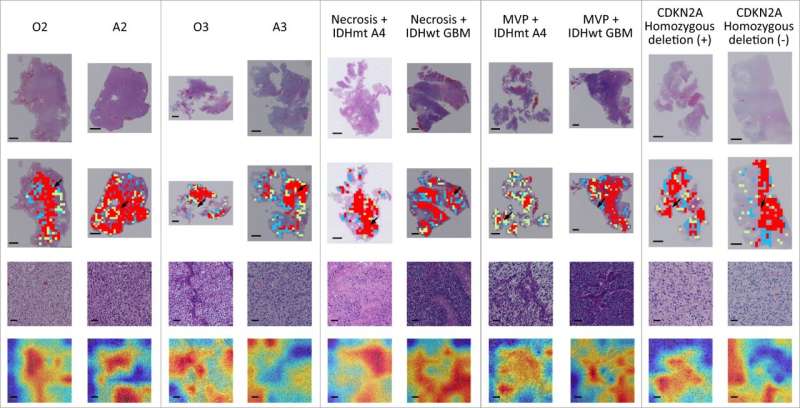This article has been reviewed according to Science X's editorial process and policies. Editors have highlighted the following attributes while ensuring the content's credibility:
fact-checked
peer-reviewed publication
trusted source
proofread
Advancing neuropathology with AI-driven classification of diffuse gliomas

Diffuse gliomas, which account for the majority of malignant brain tumors in adults, comprise astrocytoma, oligodendroglioma, and glioblastoma. Current diagnosis of glioma types requires combining both histological features and molecular characteristics.
This poses unique challenges in developing an integrated diagnosis model directly from whole-slide image (WSI) to classify different types of adult-type diffuse gliomas by analyzing WSIs. Additionally, the gigapixel-level resolution of WSI makes original convolutional neural network computationally impossible.
In a study published in Nature Communications, a research team led by Prof. Li Zhicheng from the Shenzhen Institute of Advanced Technology (SIAT) of the Chinese Academy Sciences has proposed an integrated diagnosis model for automatic classification of adult-type diffuse gliomas directly from annotation-free standard whole-slide pathological images without requiring molecular test.
The model can classify tumors strictly according to the fifth edition of the World Health Organization (WHO) Classification of Tumors of the Central Nervous System (CNS) released in 2021.
The researchers developed a deep learning model that analyzes WSIs, enabling it to identify and classify gliomas without extensive manual annotation.
The model was trained and validated on a dataset of 2,624 patient cases from three different hospitals, ensuring a diverse and comprehensive dataset. The effectiveness of the model was measured by its accuracy in classification, the sensitivity to different glioma types and grades, and the ability to distinguish between genotypes with similar histological features.
Experimental results showed that the proposed model achieves high performance with the area under the receiver operator curve all above 0.90 in classifying major tumor types, in identifying tumor grades within type, and especially in distinguishing tumor genotypes with shared histological features.
"Our integrated diagnosis model has the potential to be used in clinical scenarios for automated and unbiased classification of adult-type diffuse gliomas," said Prof. Li. "The future research will focus on improving this model to have multi-center, multi-racial datasets."
More information: Weiwei Wang et al, Neuropathologist-level integrated classification of adult-type diffuse gliomas using deep learning from whole-slide pathological images, Nature Communications (2023). DOI: 10.1038/s41467-023-41195-9




















